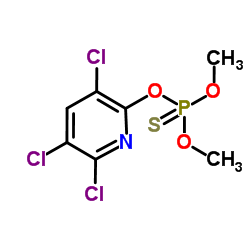Total diet study on pesticide residues in France: Levels in food as consumed and chronic dietary risk to consumers
Alexandre Nougadère, Véronique Sirot, Ali Kadar, Antony Fastier, Eric Truchot, Claude Vergnet, Frédéric Hommet, Joëlle Baylé, Philippe Gros, Jean-Charles Leblanc, Alexandre Nougadère, Véronique Sirot, Ali Kadar, Antony Fastier, Eric Truchot, Claude Vergnet, Frédéric Hommet, Joëlle Baylé, Philippe Gros, Jean-Charles Leblanc, Alexandre Nougadère, Véronique Sirot, Ali Kadar, Antony Fastier, Eric Truchot, Claude Vergnet, Frédéric Hommet, Joëlle Baylé, Philippe Gros, Jean-Charles Leblanc
Index: Environ. Int. 45 , 135-50, (2012)
Full Text: HTML
Abstract
Chronic dietary exposure to pesticide residues was assessed for the French population using a total diet study (TDS) to take into account realistic levels in foods as consumed at home (table-ready). Three hundred and twenty-five pesticides and their transformation products, grouped into 283 pesticides according to their residue definition, were sought in 1235 composite samples corresponding to 194 individual food items that cover 90% of the adult and child diet. To make up the composite samples, about 19,000 food products were bought during different seasons from 2007 to 2009 in 36 French cities and prepared according to the food preparation practices recorded in the individual and national consumption survey (INCA2). The results showed that 37% of the samples contained one or more residues. Seventy-three pesticides were detected and 55 quantified at levels ranging from 0.003 to 8.7mg/kg. The most frequently detected pesticides, identified as monitoring priorities in 2006, were the post-harvest insecticides pirimiphos-methyl and chlorpyrifos-methyl—particularly in wheat-based products—together with chlorpyrifos, iprodione, carbendazim and imazalil, mainly in fruit and fruit juices. Dietary intakes were estimated for each subject of INCA2 survey, under two contamination scenarios to handle left-censored data: lower-bound scenario (LB) where undetected results were set to zero, and upper-bound (UB) scenario where undetected results were set to the detection limit. For 90% of the pesticides, exposure levels were below the acceptable daily intake (ADI) under the two scenarios. Under the LB scenario, which tends to underestimate exposure levels, only dimethoate intakes exceeded the ADI for high level consumers of cherry (0.6% of children and 0.4% of adults). This pesticide, authorised in Europe, and its metabolite were detected in both cherries and endives. Under the UB scenario, that overestimates exposure, a chronic risk could not be excluded for nine other pesticides (dithiocarbamates, ethoprophos, carbofuran, diazinon, methamidophos, disulfoton, dieldrin, endrin and heptachlor). For these pesticides, more sensitive analyses of the main food contributors are needed in order to refine exposure assessment.
Related Compounds
| Structure | Name/CAS No. | Molecular Formula | Articles |
|---|---|---|---|
 |
heptachlor
CAS:76-44-8 |
C10H5Cl7 | |
 |
Chlorpyrifos-methyl
CAS:5598-13-0 |
C7H7Cl3NO3PS |
|
A simple method for the determination of organochlorine poll...
2016-03-01 [Food Chem. 194 , 319-24, (2015)] |
|
Are exploited mangrove molluscs exposed to Persistent Organi...
2011-06-01 [Chemosphere 84(3) , 318-27, (2011)] |
|
A novel fully automated on-line coupled liquid chromatograph...
2014-12-29 [J. Chromatogr. A. 1374 , 273-7, (2014)] |
|
Development of a more specific and accurate multiple reactio...
2015-03-01 [J. Chromatogr. B. Analyt. Technol. Biomed. Life Sci. 983-984 , 47-54, (2015)] |
|
Organochlorine pesticides in green mussel, Perna viridis, fr...
2012-11-01 [Bull. Environ. Contam. Toxicol. 89(5) , 995-9, (2012)] |